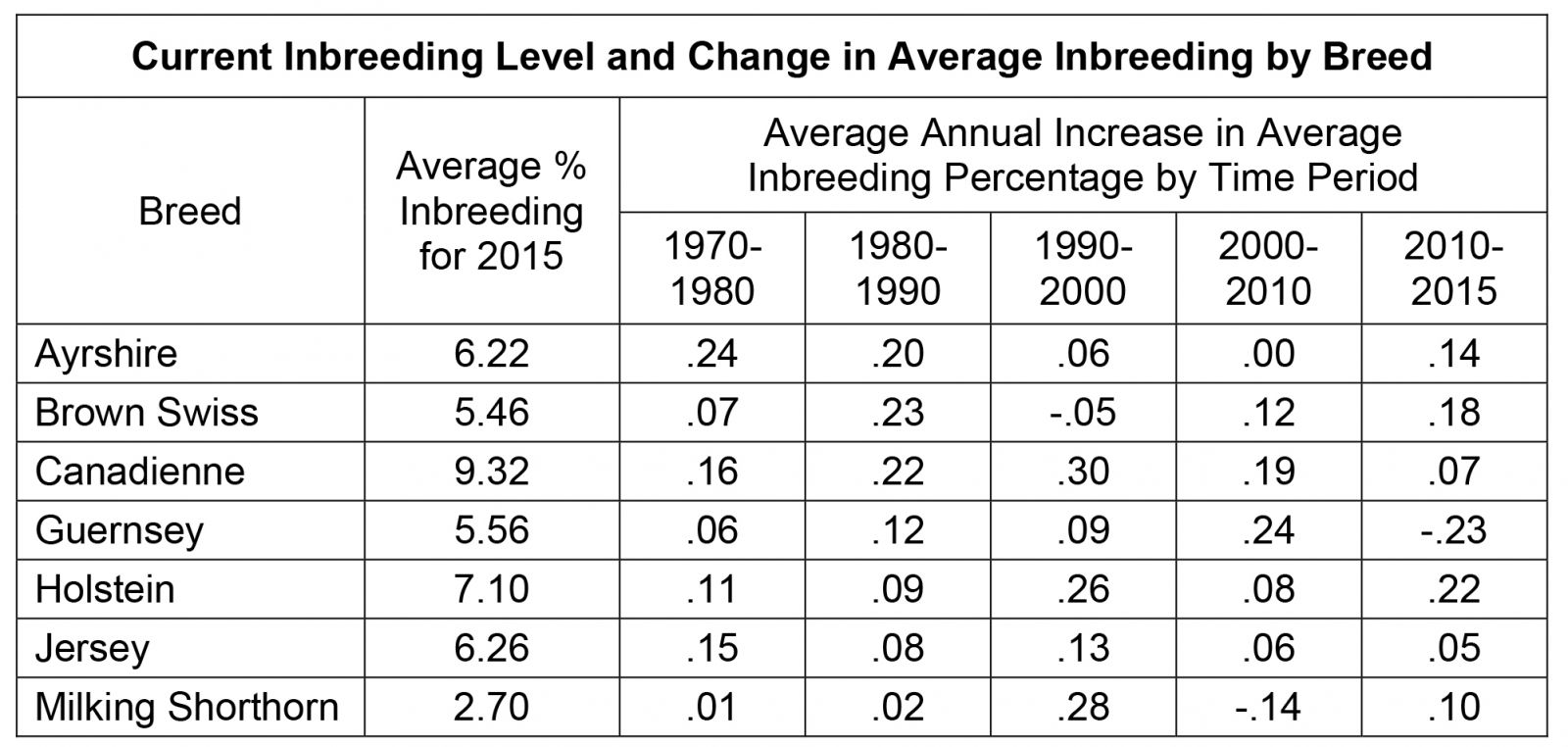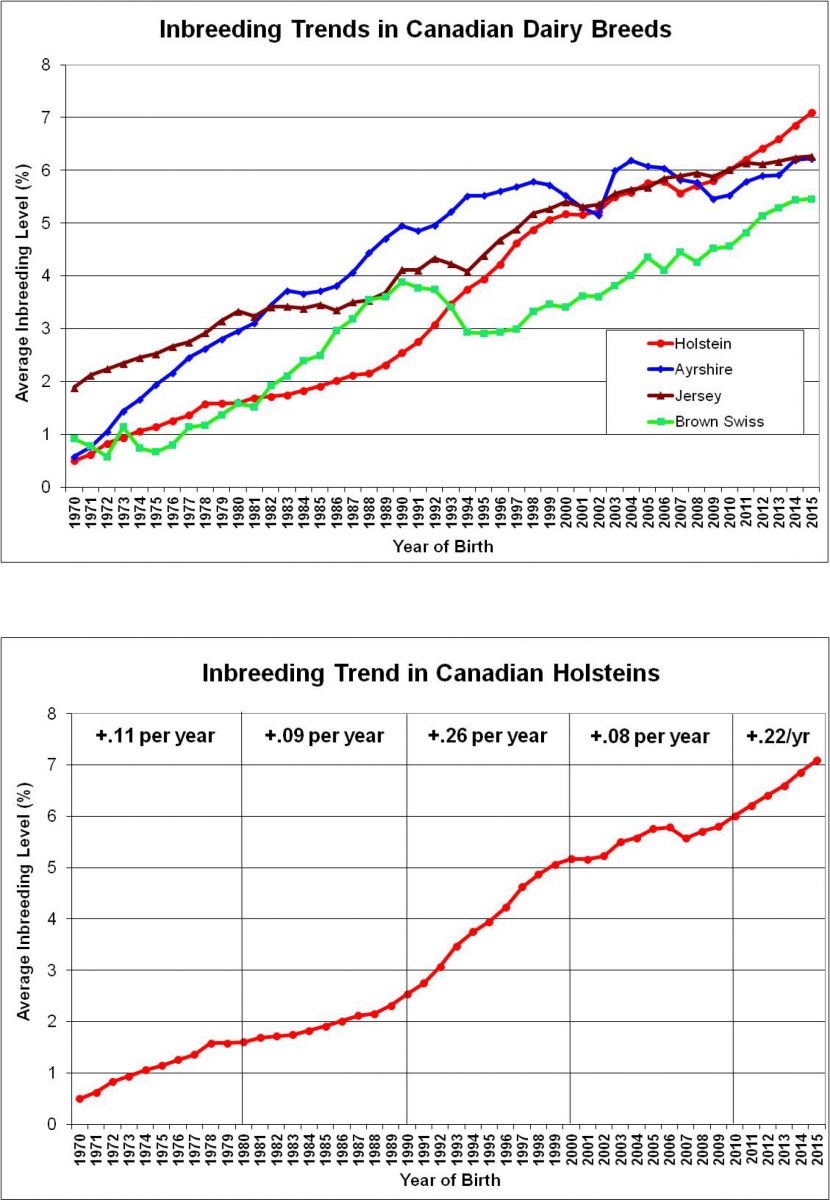Each year, based on official animal registration and pedigree information within its database, Canadian Dairy Network (CDN) computes current statistics related to the level of inbreeding within the Canadian cow population of each dairy breed. In this way, the average level of inbreeding for animals born in the most recent complete calendar year as well as trends in the level of inbreeding over time can easily be monitored. The following table is based on females born in Canada since 1970 up to and including registered heifers born in 2015.
Among the four major dairy breeds in Canada, the average inbreeding level for heifers born in 2015 is now highest for Holstein at 7.10%, followed by Jersey (6.26%), Ayrshire (6.22%) and Brown Swiss is now lowest at 5.46%. For heifers born since 2010, the Jersey breed has best controlled the rate of increase in inbreeding to 2015 at +.05% per year compared to rates of increase of +.14%, +.18% and +.22% per year for Ayrshire Brown Swiss and Holstein, respectively.
Among the breeds with the smallest populations in Canada, Canadienne continues to have the highest average inbreeding, now at 9.32% for females born in 2015 but also has a relatively slow rate of increase at +.07% per year since 2010. Guernsey heifers born in 2015 average 5.56% inbreeding which has significantly lowered the average rate of increase since 2010 to -.23% per year. For Milking Shorthorn, heifers born in 2015 average 2.70% inbreeding based on available pedigree data for the breed and the rate of increase has been moderate at +.10% per year for heifers born since 2010.
Below is a graph showing the inbreeding trend for the four largest dairy breeds based on registered females born in Canada since 1970 as well as a specific graph for the Holstein population alone. For further information, please feel free to contact Canadian Dairy Network (CDN).
Download a PDF copy of this article













